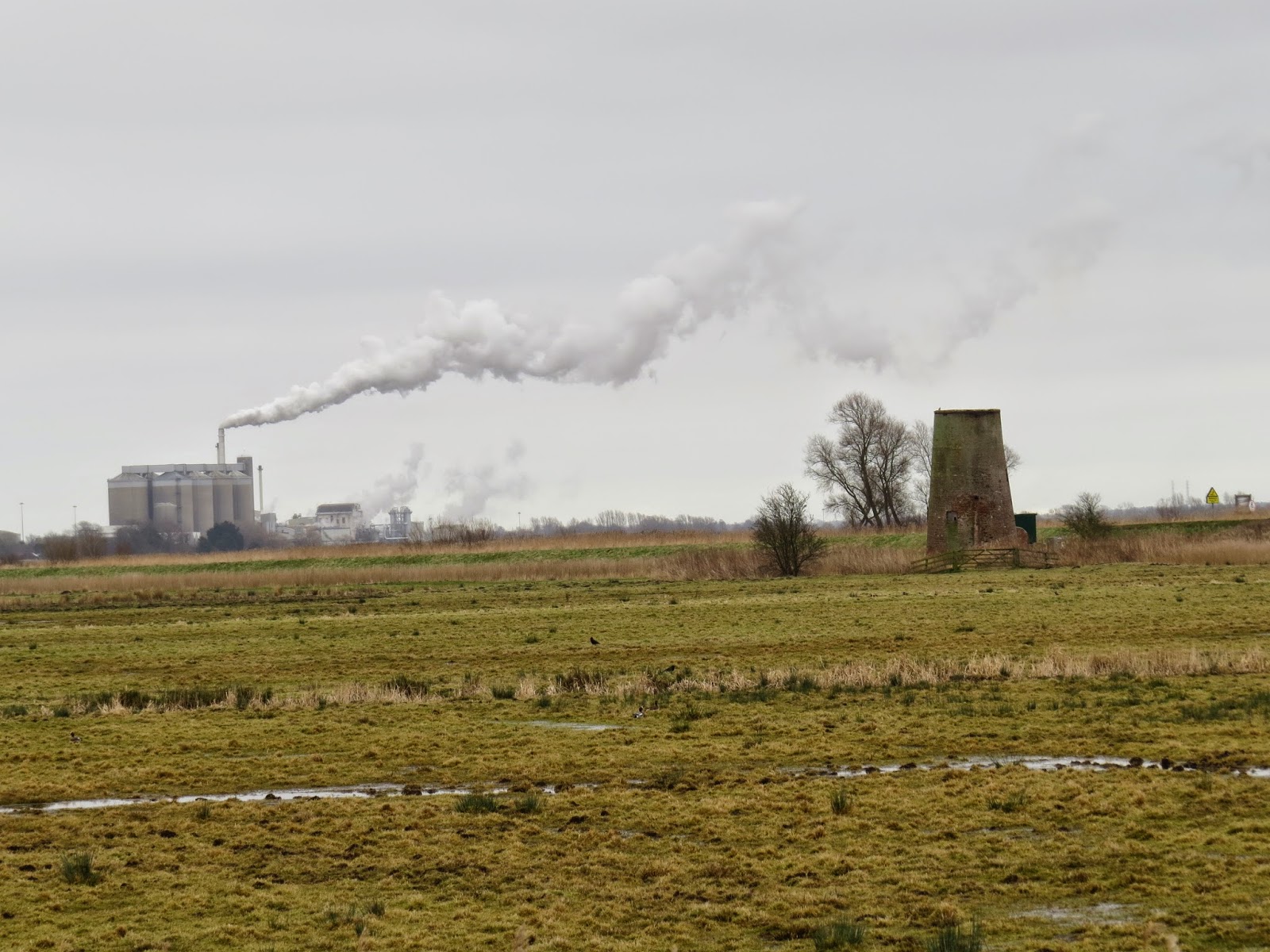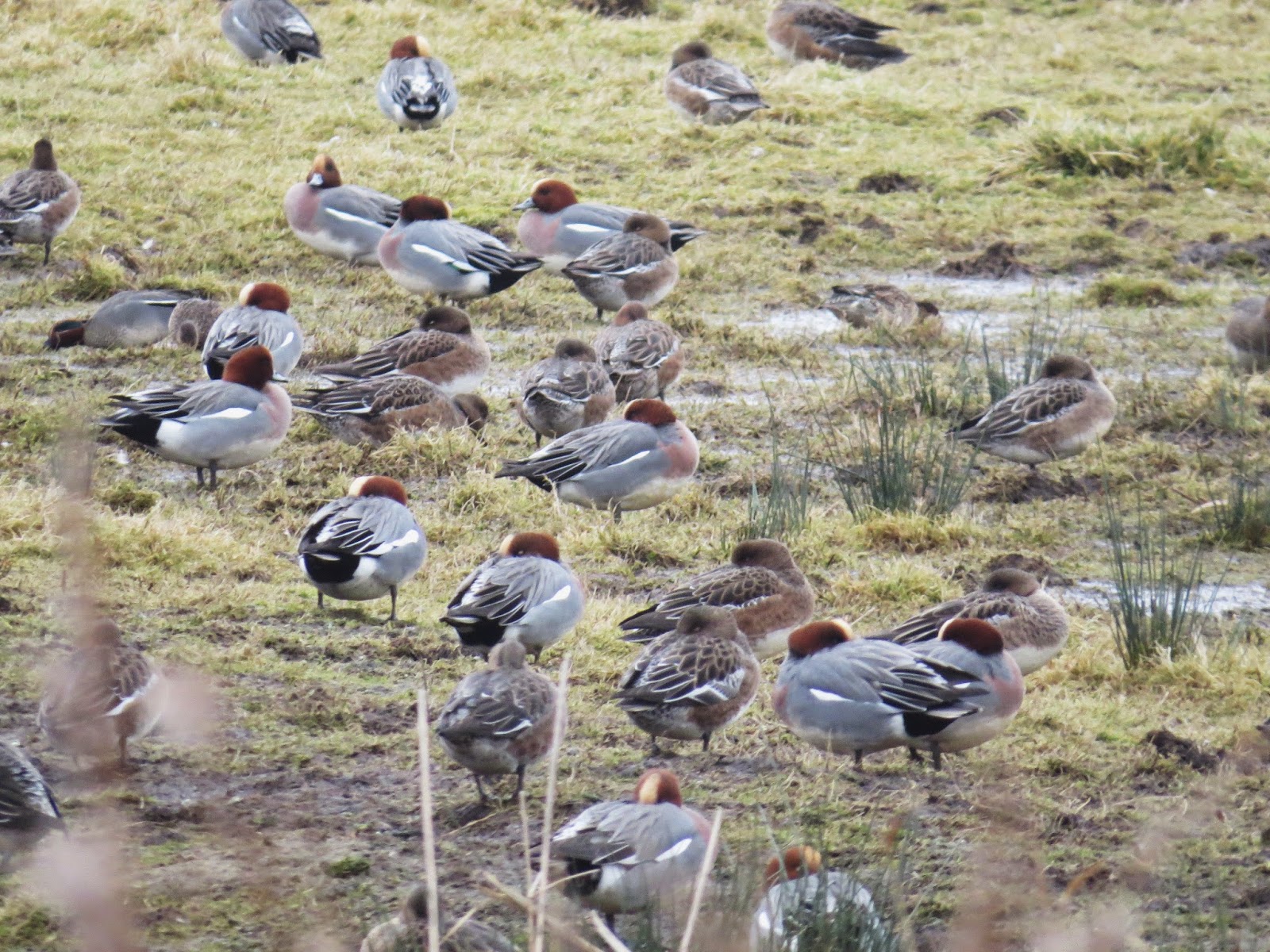 |
| Buckenham Mill and Cantley Sugarbeet Factory |
This morning, Dad and I are at Buckenham Marshes. This is Strumpshaw's neighbouring reserve that is also looked after by the same volunteers. Unlke Strumpshaw, Buckenham is a simple path which takes you past flooded fields and onto another reserve also owned by the RSPB called Cantley Marshes. Buckenham is a well known site for two things; the largest rook roost in the UK (check out my post for Dec 21st) and as a wintering ground for rare species of geese. Today, I am here for the latter.
 |
| Wigeon |
The landscape here is flat with few trees. It is perfect to try out my camera's tripod for some stable shots of things on the fields. There are plenty of subjects to photograph; greylags (including a white one), swans, rooks and thousands of wigeon. In fact, Buckenham has 2,500 wigeon recorded here this winter and, personally, just as good as any rare goose to come and see. They settle along the field margins where ditches devides it from the main track we are walking on. In other words, they are just a few feet from you. The sounds of growls and whistled 'weee-ooo' calls made by these yellow-capped ducks surrounds you from all directions. And then something spooks them all to take to the air to become a sort of murmuration of wigeon (they don't quite make those patterns starlings do) and fly over our heads like a rapid stream before settling down again. Just brilliant!
 |
| Peregrine |
What spooked them up? Well, another thing Buckenham is known for are birds of prey. On a really good day, you may see anything from hen harriers and merlins to barn owls and short-eared owls. Today though, I watched a peregrine in a tree watching the wigeon for a potential meal. Peregrines are regularly seen here during winter months and this one may even be from Norwich Cathedral. You often get one or two on the many gate posts out on the marshy fields (sometimes both together on the same gate!). We also had a marsh harrier soar over the wigeon, causing them to go up again.
Now about those geese. There are about seven species that visit Buckenham every year; greylag, Canada, Egyptian, pink-footed, (feral) barnacle, Taiga bean and white-fronted. The latter two are the big attractions. Buckenham is one of just a handful of sites in the UK to see them. These birds come here every winter in small numbers (there were 196 white-fronts and 32 Taiga bean geese recorded this year), but to see them you need to have a scope on hand. They tend to be at the far back of the fields, half hidden behind dips in the landscape. For a better chance of seeing them a little better, I went up to the old Buckenham windmill. From this viewpoint, I spot a flock of Canada geese with a couple of feral barnacle geese and a few white-fronted geese amongst them. Three bean geese were also with them but flew off as I got to the windmill.

Though they were too far away to photograph, I am still able to tell them apart. Canada geese are large with black necks with a white patch on the head. Barnacle geese are smaller and greyer with a full white head. White-fronted geese are similar to greylags, but with a white patch at the base of a pink bill and dark stripes on the breast. While bean geese are similar to pink-footed geese, but with orange legs and bills. White-fronted and bean geese are probably the rarest of our visiting goose species. The bean goose, in particular, is in decline mainly due to possible human disturbance on their breeding grounds in Scandinavia where they come from.
Other highlights today include; skylarks, fieldfare, pied wagtails and a kestrel hovering along the river bank following us back from the windmill.
 |
| Kestrel |
 |
| Mute Swan |
 |
| Greylag |
 |
| White Greylag |










No comments:
Post a Comment